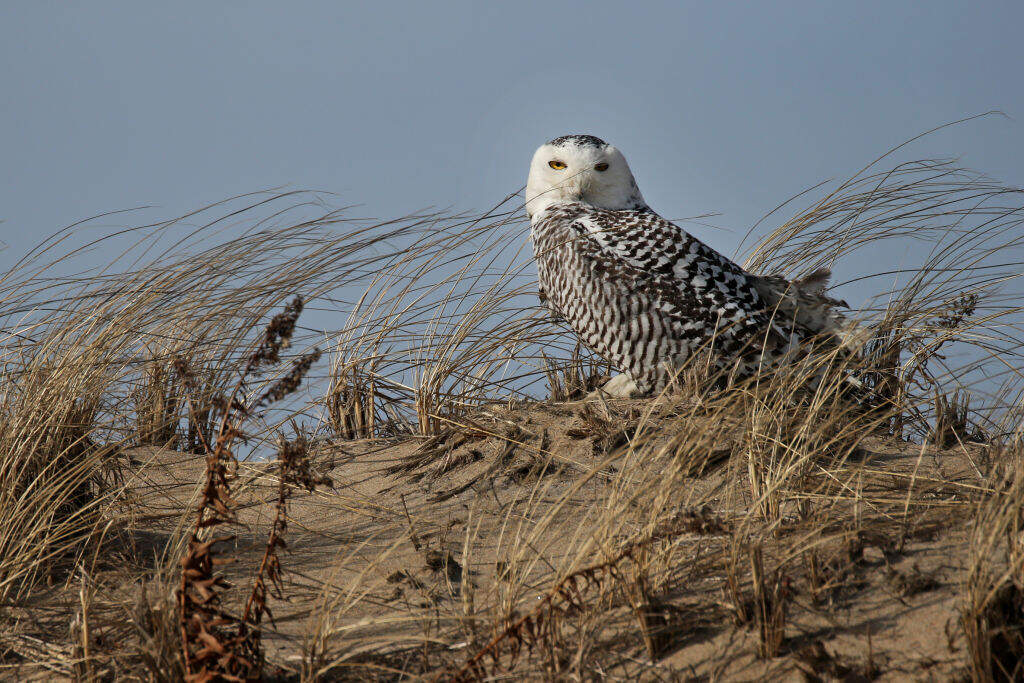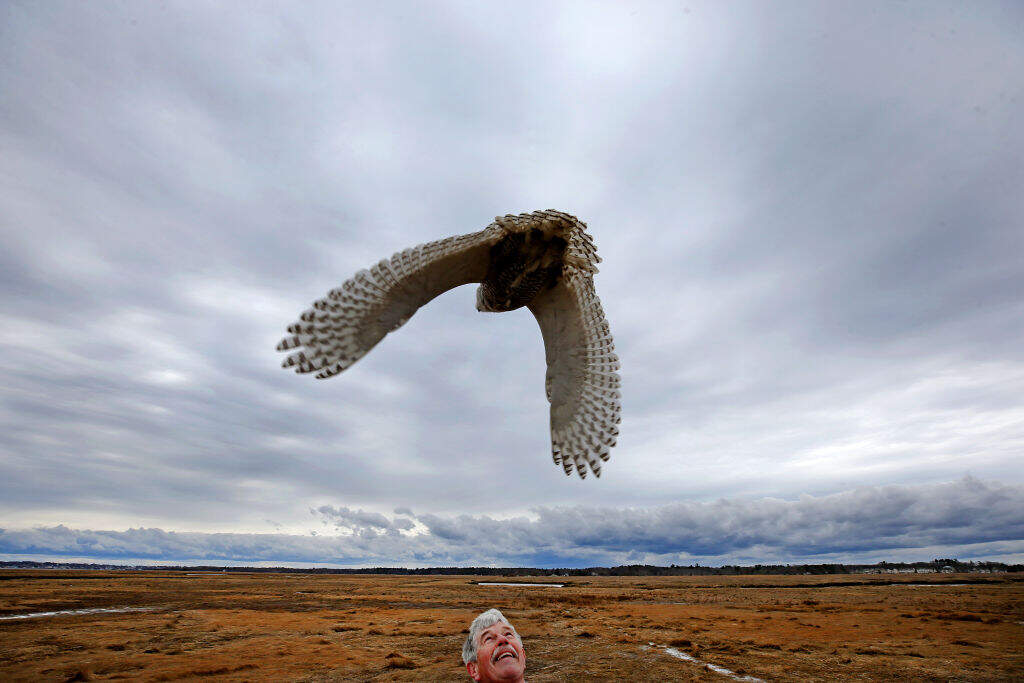Advertisement
The Weekender: Boston's Saturday Morning Newsletter
January is owl season in Massachusetts. Here’s how to find these elusive birds

Editor's Note: This is an excerpt from WBUR's Saturday morning newsletter, The Weekender. If you like what you read and want it in your inbox, sign up here.
Clues that the year has just begun are all around us. Some are obvious: A Christmas tree left out on the sidewalk, hundreds of college students back in town, a slew of new members at your local gym. But head to your local forest and you might see another sign: Owls!
A handful of local owls and two types of migratory owl can be found across Massachusetts in January. The trick is simply knowing where to look.

This month, Mass Audubon is hosting a series of “Owl Prowls” for birders hoping to hear or even spot these elusive nocturnal birds. I spoke with educator Tia Pinney, Mass Audubon’s senior naturalist for the MetroWest region, to learn why January is such a special month for owls in the state. Here’s what she shared.
(This interview has been lightly edited for clarity.)
Hanna Ali: January seems to be the best month to spot owls. Why is that?
Tia Pinney: “January is the prime month for owls because that’s when many of them are nesting and courting.
“Depending on where you are in the state, the primary owls you’ll find are great horned owls, barred owls and eastern screech owls. If you’re on or near the coast, you can find snowy owls and short-eared owls both north and south of Boston in the winter.”
HA: What brings owls to Mass. in the winter?
TP: “Great horned owls, barred owls and eastern screech owls are our resident owls. So, they actually live here year-round, though they might shift their territory somewhat.
“Short-eared and snowy owls are a different case — they [migrate] here for the winter. Snowy owls come down from the Arctic and Greenland, and short-eared owls come from Canada and Alaska. All owls are cold-hearty. [So] these birds migrate, not because of the cold, but because they need food. Snowy and short-eared owls come south because snow cover limits their access to food.”
HA: How are resident and migratory owls affected by warming winters? And what does that mean for seeing winter owls in Mass.?
TP: “Owls eat mammals — small mammals, like lemmings and mice. But intense storms, lack of snow or lack of cold hugely impact the number of food sources they can reach.
“For [snowy and short-eared] owls, migration is a huge risk. Think about it in terms of traveling: You could get a flat tire, the engine blows out; there might not even be food when you get to your destination."
As climates warm, "If [owls] can access their food at home or farther north, they may not move as far. If you don’t have to migrate to Massachusetts or Maryland to get food, then [you] don’t.”
HA: Can you share your favorite weird facts about owls?
TP: “Owls have far more bones in their neck than we do. We have seven and owls have double that, 14, which gives them many more joints in their neck. As a result, they can turn their heads 270 degrees. You’re lucky if you can even turn your head 90 degrees!
“Barn owls, which are resident owls (though fairly uncommon), can hunt without any light whatsoever. They can hunt in pitch darkness and nail that mouse every time.”
HA: Where might you find an owl on your own? What should people look or listen for?
TP: Our resident owls are forest birds. If you live somewhere with trees — even in Boston — you can find eastern screech owls. Ideally, you’d need [a place] with some trees and some open space for owls to hunt, an area where there might be mice, for example. Barred owls like areas that are wetter, places that are swampy. And snowy and short-eared owls prefer the coastal areas — think Plum Island, Duxbury Beach … those sort of flat, treeless, tundra-like areas.
“The thing to do is to listen. The likelihood you will see them is slim. Their feathers have no hard edges and they make virtually no noise as they fly. There are two or three different hoots you will hear. First, there’s the big bass voice of a great horned owl, a classic “hoot.” Then, there’s the screech owl, which is a smaller bird with a higher pitched call. They kind of sound like a horse’s whinny. And when it comes to time of day, the later the better, since owls are nocturnal.”
P.S.— In other bird news: Scientists say there’s been a recent resurgence in a shorebird with a funny name: the American Oystercatcher. (Trust me, you’ll want to see a picture.) If that made you laugh like it made me, you’ll want to subscribe to The Pick Me Up, our seasonal joy newsletter full of similar good news stories.
